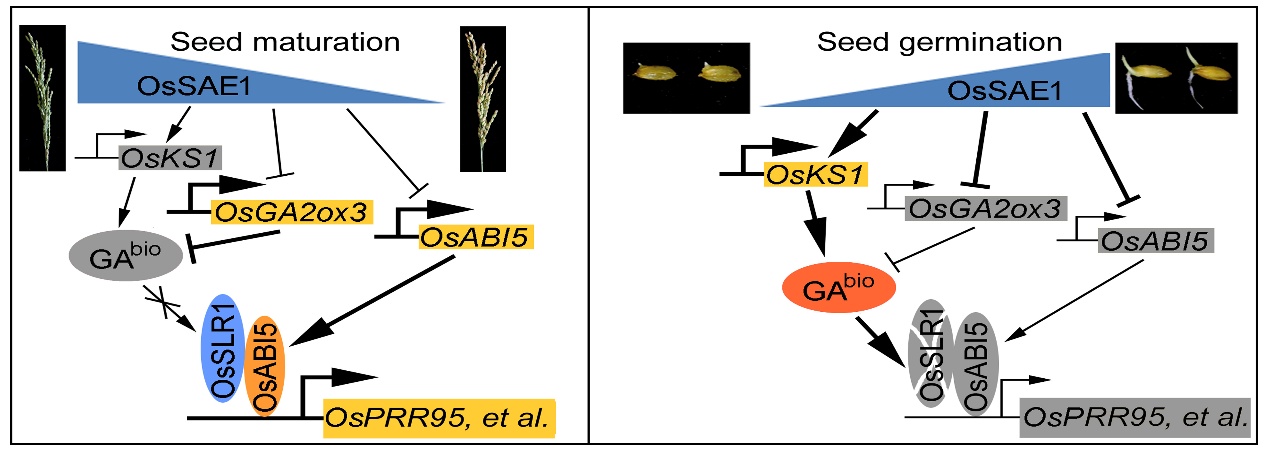Recently, the research group of Dr. Hua Qin and Prof. Rongfeng Huang from Biotechnology Research Institute, Chinese Academy of Agricultural Sciences has revealed a novel mechanism of rice seed germination controlled by AP2/ERF transcription factor OsSAE1. The results are published on Journal of Integrative Plant Biology with the title of “OsSAE1 orchestrates the antagonistical regulation of gibberellin and abscisic acid signaling to control rice seed germination”.
Successful seed germination is the premise for continuing the plant life cycle and crop yield. Rapid and uniform seed germination often exhibits obvious growth advantages and high resistance to abiotic stresses, thereby reducing seedling mortality and increasing yield. Identify the key genes associated with seed germination and dissecting the underlying mechanism are prerequisites for genetic improvement of seed germination in rice breeding.
Our previous study has demonstrated that AP2/ERF transcription factor OsSAE1 positively regulates rice seed germination by modulating OsABI5−mediated pathway. In the present study, we report that OsSAE1 orchestrates the antagonistical regulation of ABA and GA signaling to control rice seed germination. OsSAE1 directly activates the expression of GA biosynthesis gene OsKS1 and represses the transcripts of GA metabolism gene OsGA2ox3 to promote the accumulation of bioactive GAs, leading to the degradation of OsSLR1 to weaken the transcriptional activation ability of OsABI5 toward its target genes, ultimately promoting seed germination. Interestingly, the different haplotypes of OsSAE1 decide the transcriptional levels of OsSAE1 and seed germination rate, demonstrating that the elite haplotype of OsSAE1 is useful for genetic improvement of seed germination. Our findings deepen and widen our understanding of the mechanisms underlying ABA/GA antagonism, which could make a significant contribution to the direct seeding cultivation of rice.
This work was funded by the National Natural Science Foundation of China, the National Key Research and Development Program of China, the Youth innovation of Chinese Academy of Agricultural Sciences, the Central Public-interest Scientific Institution Basal Research Fund, and Agricultural Science and Technology Innovation Program.

|